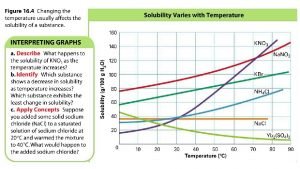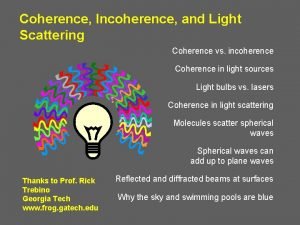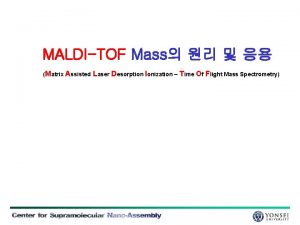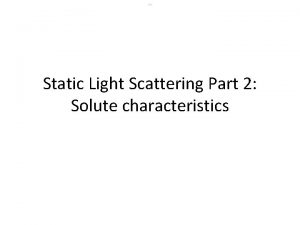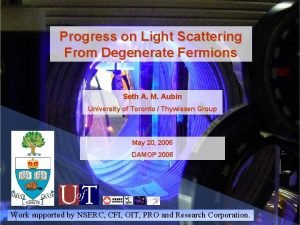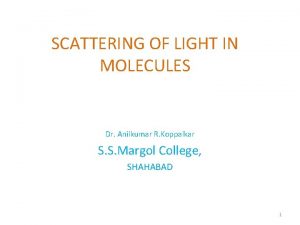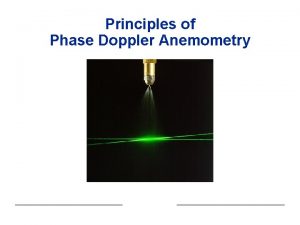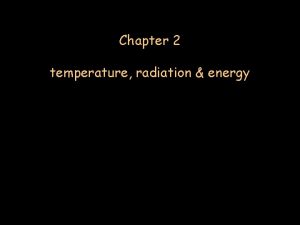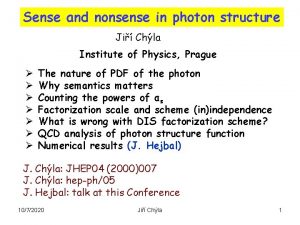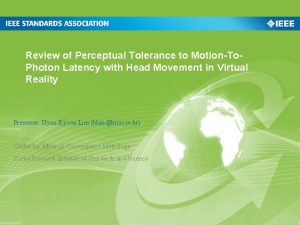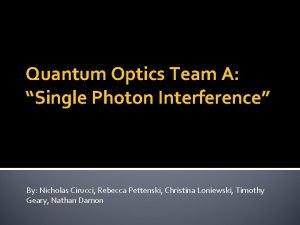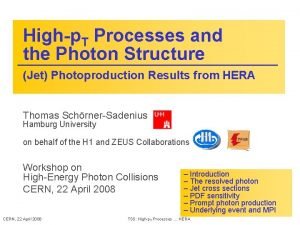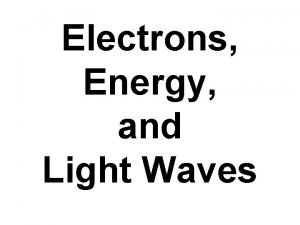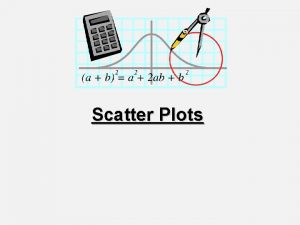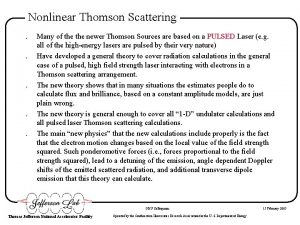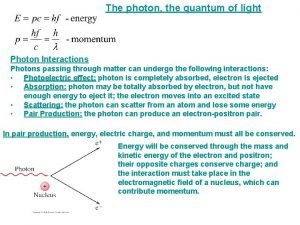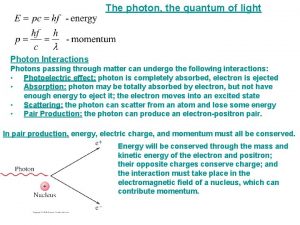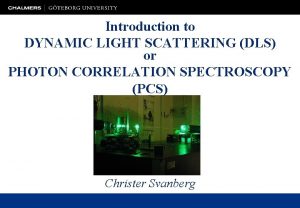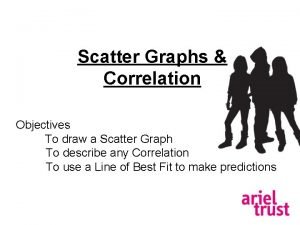Thomson Scattering How does a photon light scatter





















- Slides: 21

Thomson Scattering ØHow does a photon (light) scatter from an electron? ØClassically, the answer is Thomson scattering n Assume w The wavelength of light is small compared to an atom w The energy of the light is large compared to the binding energy of atomic electrons w The energy of the light is smaller than mec 2 1

Thomson Scattering 2

Thomson Scattering Ø In Thomson scattering an electromagnetic (EM) wave of frequency f is incident on an electron n What happens to the electron? Ø Thus the electron will emit EM waves of the same frequency and in phase with the incident wave Ø The electron absorbs energy from the EM wave and scatters it in a different direction Ø In particular, the wavelength of the scattered wave is the same as that of the incident wave 3

Rayleigh Scattering ØAn aside, Rayleigh scattering is scattering of light from a harmonically bound electron ØYou may recall the probability for Rayleigh scattering goes as 1/λ 4 n n n Why is the sky blue? Why are sunsets red? What color is the moon’s sky? 4

Compton Scattering Ø X-ray spectrum produced by bombarding a metal with electrons n n Line spectra correspond to atomic electron transitions in an excited atom Continuum corresponds to the emission of radiation from accelerated electrons (scattered by the Coulomb force of atomic nuclei) 5

Cross Section 6

Compton Effect Ø The change in wavelength can be found by applying n Energy conservation n Momentum conservation 7

Compton Effect Ø From energy conservation Ø From momentum conservation Ø Eliminating pe 2 8

Compton Effect Ø Continuing on Ø And using f=c/λ we arrive at the Compton effect Ø And h/mc is called the Compton wavelength 9

Compton Effect 10

Pair Production Ø Another process by which photons can interact with matter is electron-positron pair production n γ → e++e- Ø The process as shown cannot take place because energy and momentum are not simultaneously conserved n Consider the center-of-momentum frame for the e+ and e-. What is the momentum of the photon? Ø However energy and momentum are both conserved in the presence of a Coulomb field from an atomic nucleus or atomic electron 11

Pair Production Ø Energy and momentum conservation give Ø Energy conservation can be re-written Ø But momentum conservation (x) shows Ø Thus energy and momentum are not simultaneously conserved 12

Pair Production ØConservation of energy and momentum does hold in the presence of an atomic nucleus (or electron) where the recoil of the nucleus ensures momentum conservation ØIn order for pair production to occur, the energy of the photon must be at least twice the electron rest mass 13

Pair Production 14

Pair Production ØA related process to electron-positron pair production is pair annihilation n e++e- → γ γ ØA positron passing through matter will lose energy through collisions with atomic electrons ØIt eventually slows down and annihilates with an electron (possibly first forming a bound system called positronium) 15

PET ØPair annihilation is the basis of PET (Positron Emission Tomography) scanning n n PET scans are most often used to detect cancer and to examine the effects of cancer therapy by characterizing biochemical changes in the cancer PET scans are also used to study heart function and brain disorders 16

PET Ø PET scanning n n Positron emitting radioactive nuclei such as 11 C, 13 N, 15 O, 18 F are produced (at accelerators) The nuclei are incorporated into compounds used by the body such as sugar or ammonia Once taken into the body, positrons are emitted, lose energy in a few mm, and annihilate with electrons producing two 0. 511 Me. V photons that produced back-to-back Software reconstructs the point of origin of the annihilation producing a map showing tissues where the radiotracers have become concentrated 17

PET 18

PET 19

Photon Interactions ØInteractions of photons with matter n n The primary processes by which photons interact with matter are From low energy to high energy w Photoelectric effect w Compton scattering w Pair production 20

Photon Interactions 21
 Scattering of light in suspension
Scattering of light in suspension Scattering of light
Scattering of light Rayleigh and mie scattering
Rayleigh and mie scattering Rayleigh theory of light scattering
Rayleigh theory of light scattering Dynamic light scattering 원리
Dynamic light scattering 원리 Rayleigh theory of light scattering
Rayleigh theory of light scattering Rayleigh theory of light scattering
Rayleigh theory of light scattering Pauli blocking of light scattering in degenerate fermions
Pauli blocking of light scattering in degenerate fermions Scattering of light
Scattering of light Light scattering
Light scattering Light scattering
Light scattering Light light light chapter 23
Light light light chapter 23 Into the light chapter 22
Into the light chapter 22 Light light light chapter 22
Light light light chapter 22 Photon structure
Photon structure Motion-to-photon latency
Motion-to-photon latency Wavelength unit
Wavelength unit Photon
Photon Photon is our business
Photon is our business Photon structure
Photon structure What is a photon made of
What is a photon made of Electron vs photon
Electron vs photon
